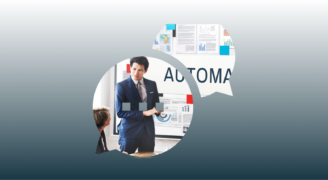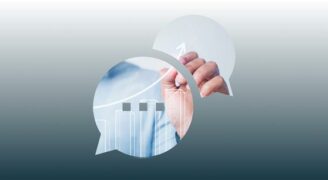Data visualization is a rapid and effective approach to present information in a universal fashion using visual data.
This method assists firms in determining which aspects influence client behavior, identifying areas that need to be addressed or given more attention, making data more remembered for stakeholders, understanding when and where to deploy specific products, and forecasting sales volumes.
Following are some additional advantages of data visualization:
• Ability to absorb information quickly, enhance understanding, and make decisions more swiftly.
• Better knowledge of the next measures needed to strengthen the organization.
• Improved ability to keep the audience's attention with information they can understand.
• Easy distribution of information that increases the opportunity to share insights with everyone involved.
• Eliminates the need for data scientists because data is more accessible and understandable.
• Enhances the ability to act on findings quickly and, thus, achieve success with greater speed and fewer errors.
• Data visualization makes both common measurements and complex analysis more understandable when executed properly. When data visualization is performed incorrectly, it misleads analysis or confuses the audience.
When developing a data visualization strategy, there are four important steps to consider.
• Choose the best systems : It is essential to select an ERP system that combines different data from throughout your organization to produce a single source of data. Search for products that include embedded business intelligence and data visualization tools. Features such as search tools for your team, reporting functionality, and automatic data visualizations in charts and graphs enable anyone to create meaningful data representations.
• Understand your target audience : The level of information in your data visualization will be totally determined by your audience. Department managers or line-of-business leaders may require details on daily operations, whereas your C-suite may merely require high-level data to inform strategic choices.
• Understand your purpose : Before deciding on a data visualization method, it is essential to comprehend the information you want to convey to your audience. Is your objective to present quantifiable sales data, like the past season's sales, against expectations? Will the data be shown on dashboards for on-demand access, or will it be delivered in weekly reports? Understanding these details ensures that your data visualizations successfully communicate insight.
• Invest in your team's capabilities : Even if you perceive your team's data visualization skillset to be exceptional, conduct a survey or ask them on their confidence levels and train them if necessary. Most data visualization platforms offer strong online or in-person training opportunities to increase the accounting team's capabilities.
Data Visualization in NetSuite
NetSuite allows enterprises of all sizes to obtain real-time visibility into company performance across all company operations. From summary level to process level, by breaking down data silos and integrating all facts under one roof. SuiteAnalytics, NetSuite's integrated business analytics platform, provides finance teams with powerful analysis and visualization features. They need to translate insights into relevant data-fueled stories, all with simple tools and no programming or technical resources required. At no extra cost, SuiteAnalytics offers companies with :
Saved Search : Delivers true results according to the criteria and filters provided, searching across millions of documents to get precisely what you are looking for.
Reports : Easily configurable, conventional and innovative reports to match your company requirements.
Workbook : Statistical methods for corporate users to stream data, develop advanced filters, and analyze information using pivot tables and charts.
Key Performance Indicators (KPIs) and Dashboarding : A strong way to combine Saved Search, Reports and Workbooks into one attractive data visualization right at your fingertips. Utilize a single system of record among all sectors of your organization to provide genuine, business critical data briefly.
Common Applications for Data Visualization
Following are examples of common data visualization use cases:
Marketing and sales : According to Statista, a market and consumer data source, $566 billion was spent on digital advertising in 2022, it is expected to exceed $700 billion by 2025. Marketing departments pay close attention to their web traffic sources and how their web assets produce cash. Data visualization easily observes how marketing initiatives affect traffic trends over time.
Politics : A geographic map that shows which party each state or district voted for is a typical usage of data visualization in politics.
Healthcare : Choropleth is a type of statistical thematic map commonly used by healthcare practitioners to illustrate crucial health data. A choropleth map depicts geographical areas or regions that have been color-coded in relation to a numeric value. Professionals can use choropleth maps to see how a variable, such as the mortality rate of heart disease, varies throughout various territory.
Scientists : Scientific visualization, abbreviated as SciVis, enables scientists and researchers to get more insight from their experimental data than ever before.
Finance : When deciding whether to buy or sell an asset, finance professionals must monitor the performance of their investment decisions. Candlestick charts are trading tools that aid finance professionals in analyzing price movements over time by displaying crucial information such as securities, derivatives, currencies, stocks, bonds, and commodities. Data analysts and finance experts can spot trends by evaluating how the pricing has changed over time.
Logistics : Visualization technologies can help transport businesses discover the optimal worldwide shipping routes.
Researchers and data scientists : Data scientists often create visualizations for their own use or to disseminate information to a small group of people. The visual representations are created utilizing visualization packages from the programming languages and tools of choice. Data scientists and researchers typically employ open-source programming languages, such as Python, or proprietary data analysis tools. These data scientists and researchers use data visualization to better analyze data sets and find patterns and trends that might otherwise go unreported.
Data visualization simplifies financial reporting and gives financial analysts access to the power of analytics. Finance teams can devote less time to data preparation and more time to profitable strategic projects. Organizations combine numerous data sources to provide total financial visibility, allowing finance teams to evaluate real-time financial data to acquire deeper insights or identify hidden patterns.
Finance departments are constantly evolving, thus data visualization business cases for finance must evolve in tandem. Financial data visualization streamlines finance analytics and simplifies financial data analysis on the dashboard. Contact Jobin & Jismi, the Oracle NetSuite solution provider, if you have any queries concerning NetSuite financial data visualization.



